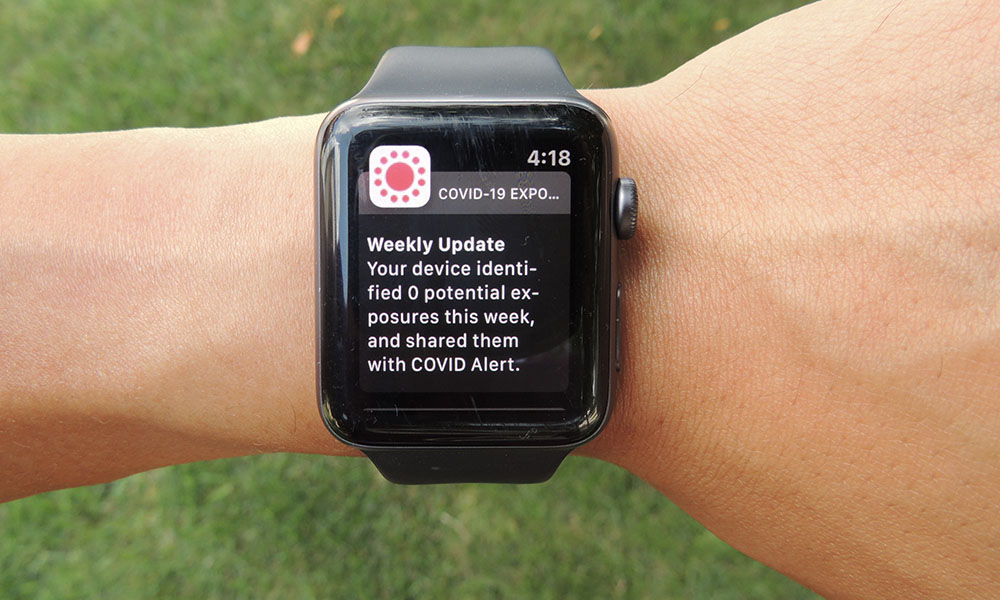Contact Tracing Technology Could Be Coming to Your Apple Watch and Fitbit
 Credit: Kevin R Yin / Shutterstock
Credit: Kevin R Yin / Shutterstock
Toggle Dark Mode
We’ve naturally been hearing quite a bit about Apple and Google’s landmark partnership to build an exposure notification system to aid in contact tracing, but so far there’s actually been one conspicuous element missing from the plan: support for contact logging on wearable devices like the Apple Watch.
To be honest, since so much of the work has been focused on the iPhone and Android smartphones, we really hadn’t given wearables much thought, but it turns out there’s a good reason why they don’t support Apple-Google style exposure notifications — the Bluetooth technologies used by most of these devices may not be up to easily supporting these kinds of capabilities.
It looks like that could be about to change, however, with a new announcement from the Bluetooth Special Interest Group (SIG), the body that regulates and administers the Bluetooth wireless standard, stating that it’s looking at ways to expand the Apple-Google Exposure Notification System (ENS) to embrace a wide variety of wearable devices, from smartwatches to fitness trackers, and possibly even specialized low-power Bluetooth wristbands that could be developed expressly for this purpose.
It’s actually unclear right now whether the Apple Watch, with its much more advanced Bluetooth features, could actually be enabled for Apple-Google ENS, as Apple hasn’t really said anything about it either way.
Presumably, since most Apple Watch users do have their iPhones on them most of the time, enabling this on the Apple Watch likely isn’t a huge priority, but it’s likely going to become more important as restrictions get lifted and people begin venturing out into the world again. After all, many folks do leave their iPhone behind when going out for a run, or leave it in their locker when working out at the gym, and this is only going to become a bigger issue as fitness centers begin reopening and people start working to shed all of those extra lockdown pounds.
What the Bluetooth SIG is after, however, is much broader than just enabling Apple-Google ENS on the Apple Watch, and in fact as Ken Kolderup, the SIG’s VP of Marketing told Engadget, “there is nothing in the spec that prevents an existing wearable to add support for this new capability,” and it’s really up to the manufacturers to do so. However, what the SIG is trying to do is look at ways to help companies build ENS into their wearables by creating a more refined spec that lays out the details in a clearer and more standardized way.
Extending the Reach
The primary objective here, as the SIG notes, is to expand contact tracing in “population groups where smartphone usage remains low,” such as primary school children and older adults living in long-term care facilities — both groups that are very unlikely to be toting smartphones.
There are several population groups critical to managing the spread of diseases like COVID-19 with relatively low smartphone penetration, presenting a coverage challenge for smartphone-based Exposure Notification Systems. We believe including wearable devices in an ENS would be a very effective method for extending its reach to support these important groups.
Elisa Resconi, physics professor, Technical University of Munich
Right now, more than 130 Bluetooth member companies have joined the new Bluetooth SIG Exposure Notification Working Group (ENWG) to begin work on a standardized method for adding support for the Apple-Google Exposure Notification System to wearable devices, while of course making sure that the focus remains on privacy and security, and it’s the SIG’s hope that not only will this encourage existing wearable manufacturers to implement ENS features, but could actually spur the development of new low-cost devices that could be made available to groups of people that wouldn’t otherwise be able to participate at all, such as small children and the elderly.
That said, most wearables would still need to be paired with a device like an iPhone in order to participate in the exposure notification system, so the vision here is really just to allow them to securely collect the IDs of other ENS-enabled devices they come into contact with, in much the same way the system already works now, except that the identifiers would have to be transferred to a paired smartphone. This could easily be a smartphone belonging to a parent or a caregiver, however, and the contact IDs would presumably be tagged to note the device that they were collected on so an exposure alert would be able to identify the actual person and device where the contact occurred.
With the Bluetooth SIG only expecting to release an initial draft of the specification within the next few months, we probably shouldn’t expect to see the first wearable ENS devices any time soon, although considering Apple’s role in developing the actual Exposure Notification System, it’s conceivably possible that it could be ahead of the curve in rolling out the technology to the Apple Watch, and the same could be said of Fitbit devices with Fitbit having been acquired by Google last year.






